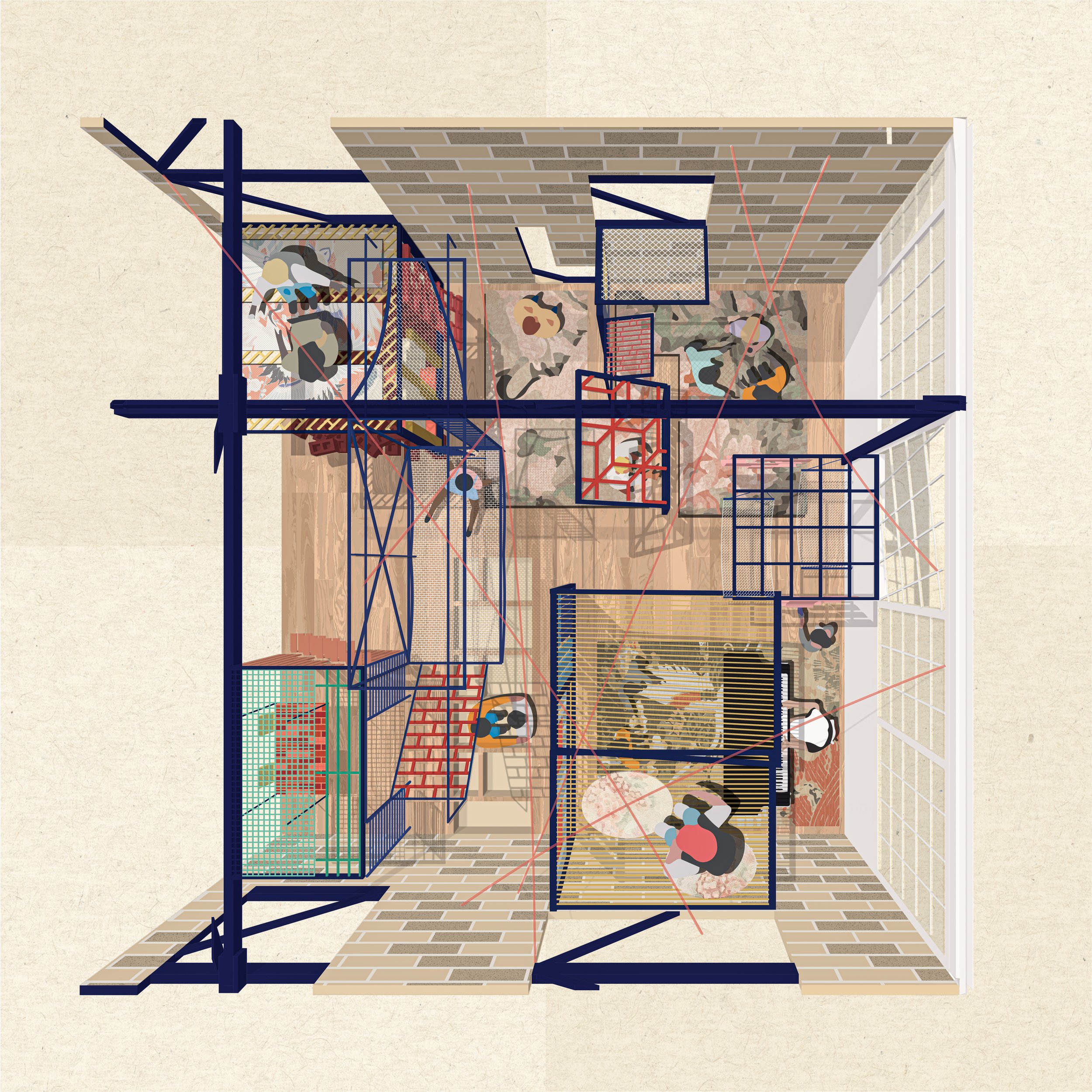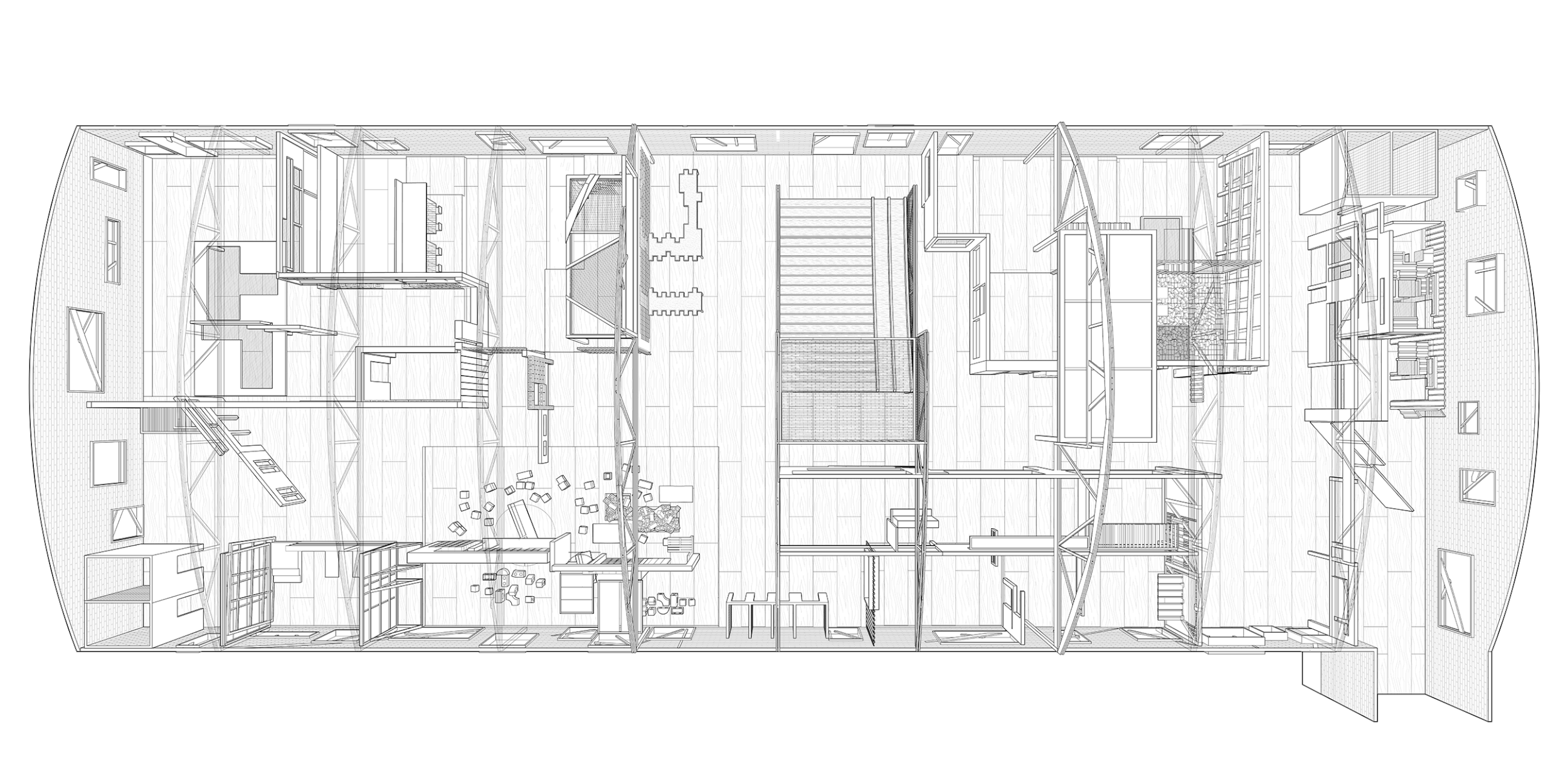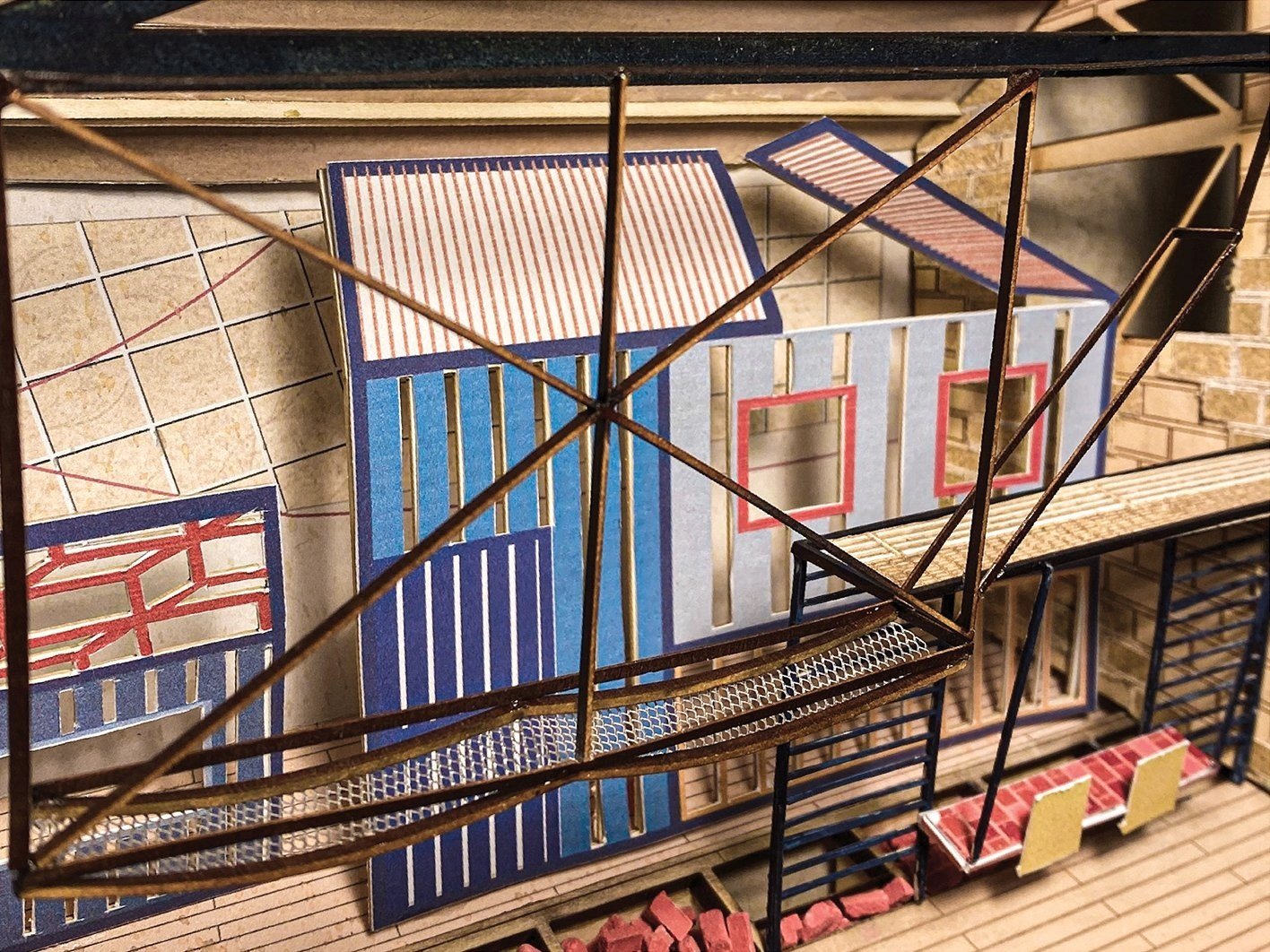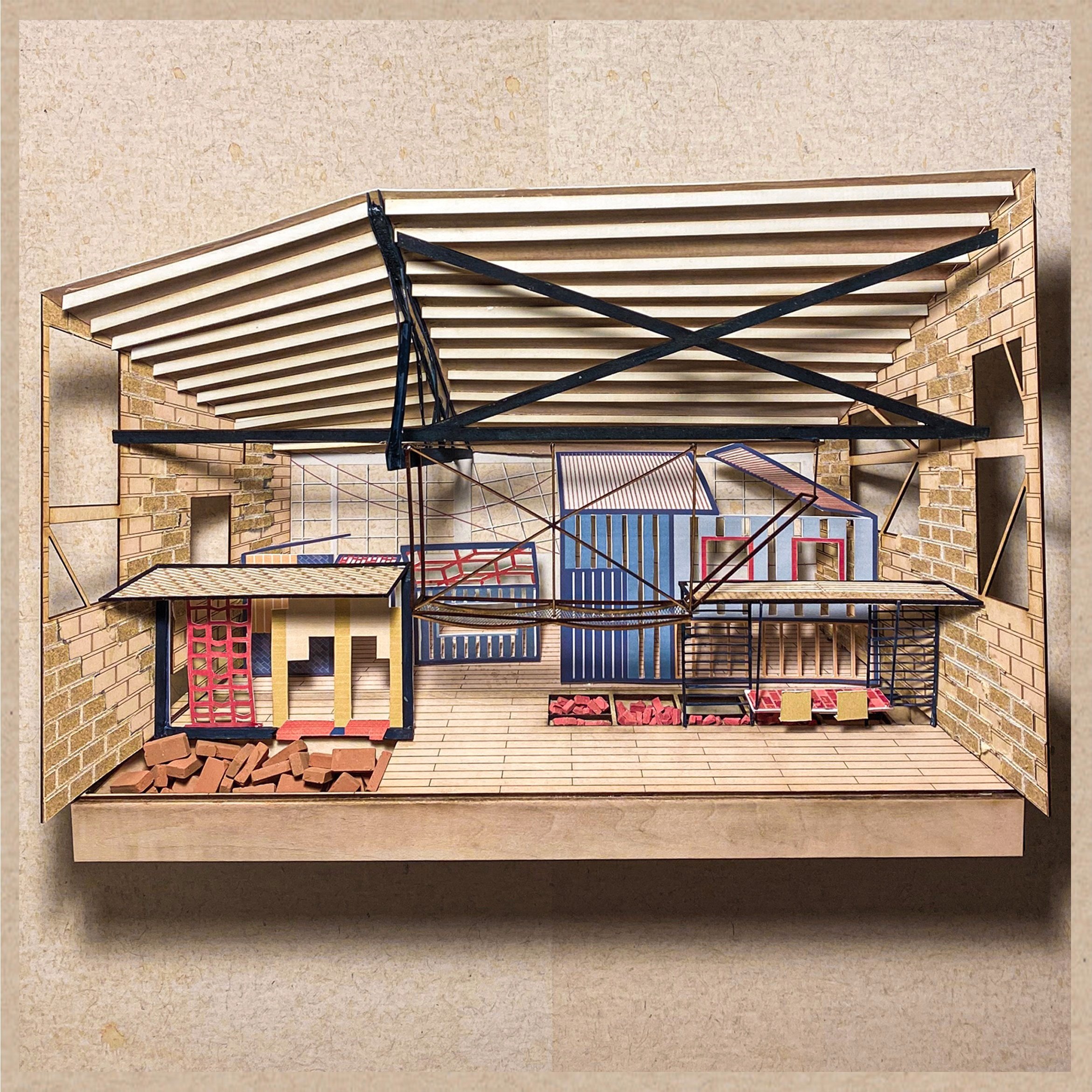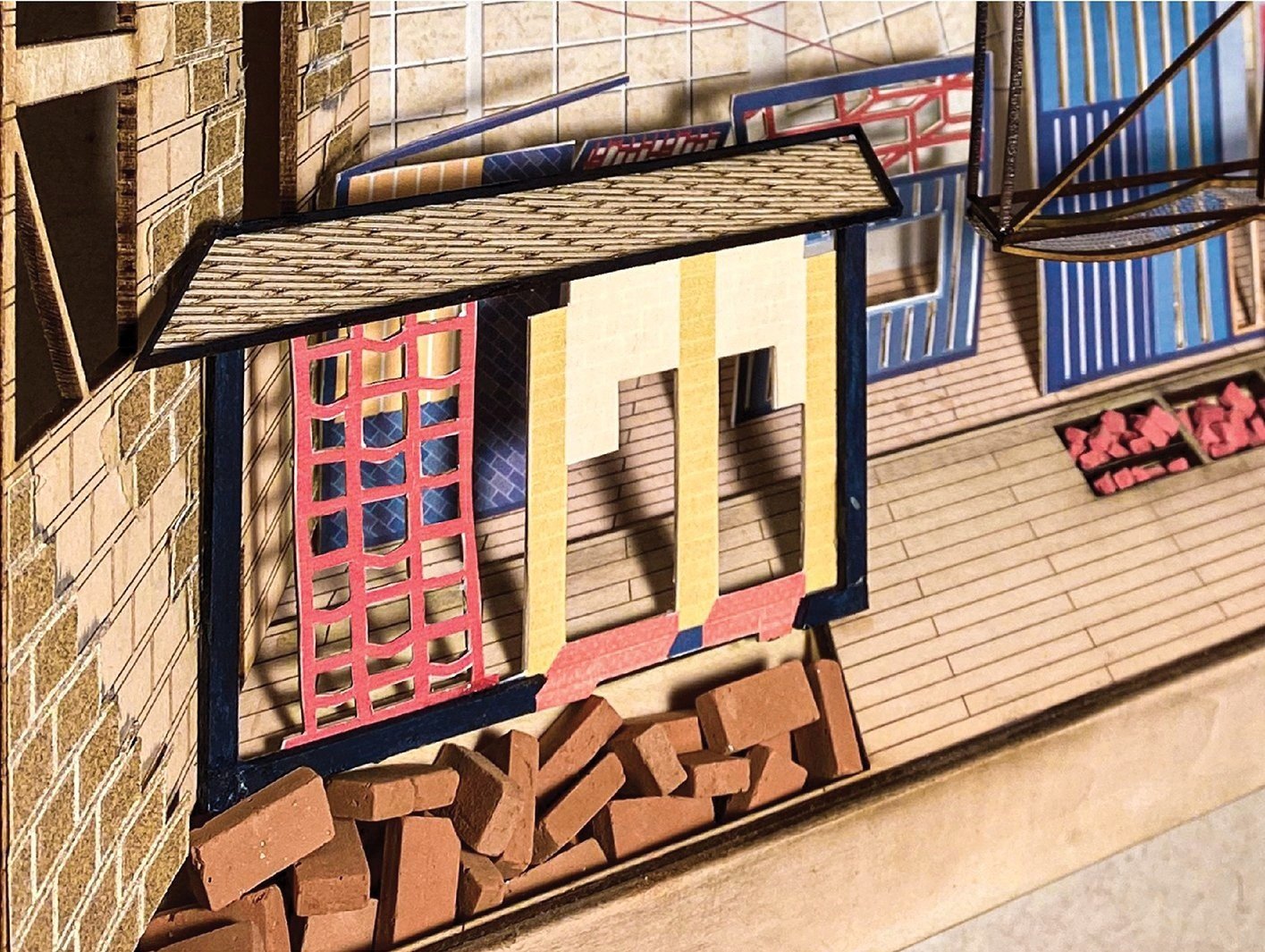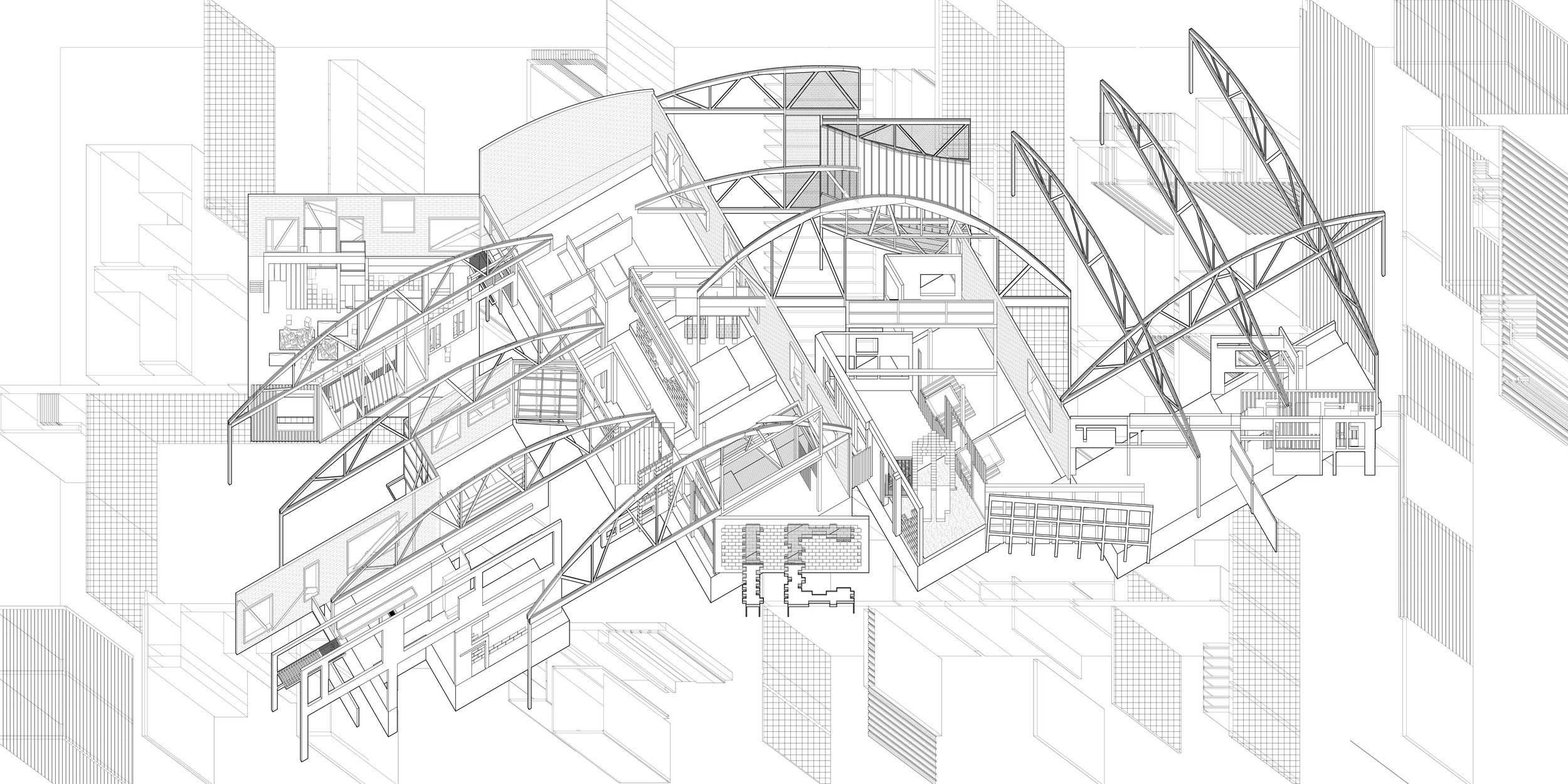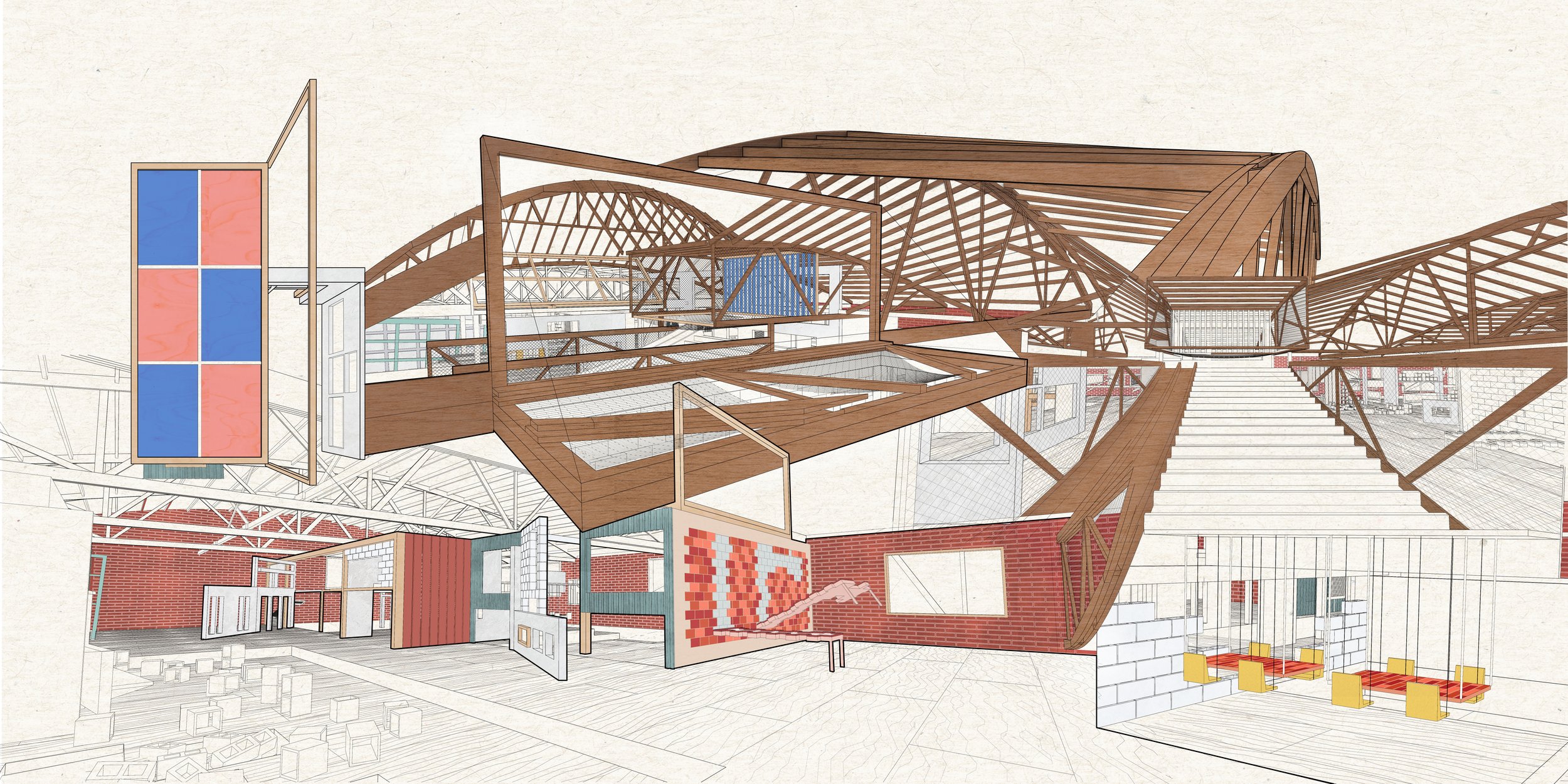
Exploration Through Motion
Adaptive Re-Use: Industrial Shed to Kindergarten
2nd Year Studio | USC Spring 2020
Site: 12210 Nebraska Avenue, Los Angeles, CA 90025
The studio investigated the work of the ‘LA School,’ specifically in terms of how materiality and form has evolved in Los Angeles, a city with a history of experimental architecture that has leveraged the misuse and deconstruction of anonymous, industrial, and non-conventional material assemblies to challenge architectural typologies and programmatic relationships. By taking stock of the how these architects have leveraged economic and fiscal constraints, the shrewd manipulation and deployment of materials in a slipshod fashion acts as the historical background for the studio’s attitude toward materiality and form. The final project is an adaptive re-use of an industrial shed into a kindergarten, understood as a space that primarily must engender play, as it has been considered as a particular attitude toward material that can be traced throughout the semester, and throughout work by L.A. School architects.
I began this semester by analyzing the Petal House by Eric Owen Moss, focusing on the idea of opening up roof structures through rotations and manipulation of density and porosity in different parts of the house.
Through unrolling, hinging, and rotations, I wanted to create a kindergarten that stimulated spatial awareness with a focus on programmatic flexibility and dis-programming. Each element in the shed such as the walls or trusses are delaminated and geometrically manipulated through shifting, turning, extruding, such that each acts a system of their own and engender different activities and spatial configurations.
When the panels are locked in their open position, the facade dissolves and the ‘interior space’ of the classroom expands to the common area. When classes are not being held, opening these members create a permeable space that transforms the whole kindergarten to ‘play.’
Further, parts of the bow-truss and walls are cut out and hinged to create platforms, playground, and rest area while undergoing material transformation. As such, characteristics inherent in these materials paired with varied programmatic configurations allows the students to learn in a tactile and exploratory school environment.
